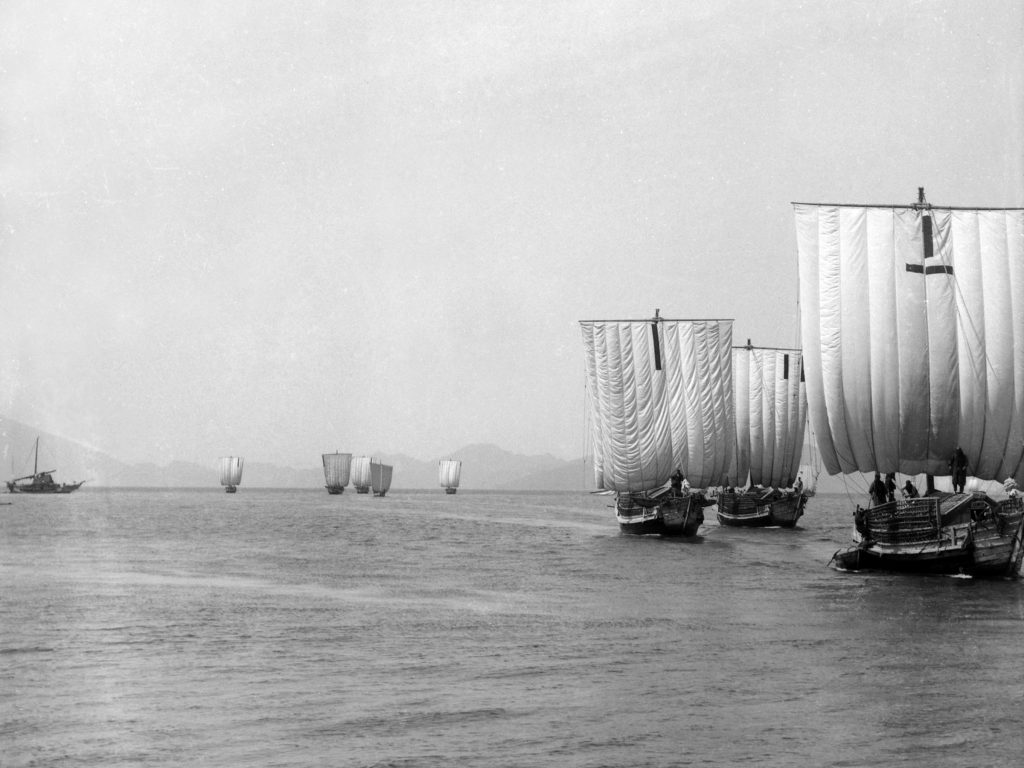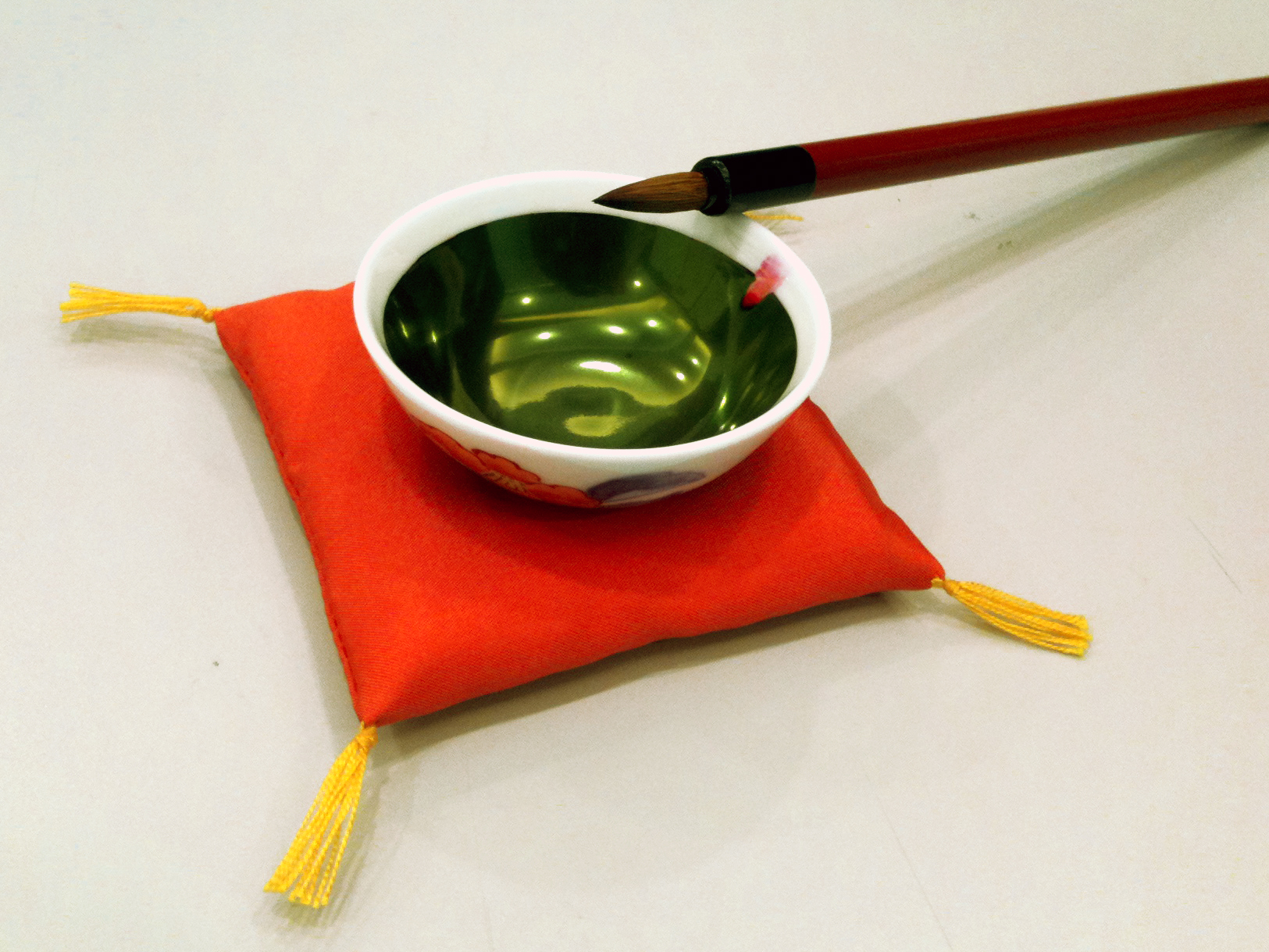The dye Benibana comes from the Safflower plant, which produces a natural vibrant red, known as Beni ( 紅 ). The dye is usually used as a luxurious one, and the red is often reserved for children and events like the New Year. Also some new vocabulary, Dye is Senryou ( 染料 ) and the pigment Ganryou ( 顔料 ).[3] Benibana is a fascinating dye that whilst coming in many variations of yellow-red, it is mostly known for the red variation in Japanese textiles and KTC particularly denoting China, wealth and luxury in Early Japanese history (500-1500 CE). This vogue came into fashion heavily after the establishment of the Sakoku policies of the Tokugawa, which saw Beni Ganryou become fashionable in the early half of the 18th century and play a pivotal role in the development of Ukiyo-E and Kabuki culture into the Meiji period making Beni dyed and decorated Kimono highly sought after and emulated fabrics and garments as well a cosmetic product into the 21st century.
Safflower originates from Egypt, and was traded on the Silk Road into China via India before 400 CE.[14][15] Benibana is thought to have come into Japan from the Chinese leg of of the Silk Road around 473 CE.[15] Benibana then began being grown in the 7th century in Japan, being grown principally in the Yamagata area and was then known as Kurenai or Suetsumu-Hana.[1][3][15] Textiles extant from this time, such as the shoes of Empress Komyo (701–760 AD) and undergarments were made using Benibana and other weaves inspired by Chinese court weaves of the time also heavily use Benibana.[16][17] These textiles were heavily influenced by Tang China's love of Red as well.
The next recorded instance of Benibana being used is in the records of the Samurai Gamō Satoyasu (active 1587-1600) in 1595 as being cultivated in the Mogami prefecture.[15] In the Edo period the Fudai warlord Mogami Yoshimitsu (1546-1614?) began cultivating Benibana which was transported as Hana-Mochi along the Mogami river by Kitamae-Bune ( Northern Bound Cargo Ships | 北前船 ) to be taken to Kyoto.[1][14] The deep red was deeply coveted in the Edo period, as it was used to get around Muromachi period sumptuary laws which only became laxed by the middle of the 17th century.[2][3]
By 1684, the colour schemes of Kosode worn by the townspeople and Bakufu became darker at the bottom [and] lighter at the top ... as darker Kosode [used] more dye [to display wealth], ... requir[ing] deep pockets ... which became 'Iki' (1680s sexy). Popular dark dyes included Beni reds (amongst samurai) [or] Nise-kurenai ( Fake / 'Dutch' red「| 似せ紅 )] for the [Heimin]) ... [with a] pound of [Ganryou] ... said to be [equivalent to] a pound of gold.[4]
From 1720 the technique used by the prominent Ukiyo-E Komin Okumura Masanobu ( 奥村政信 | 1686-1764), Nishimura Shigenaga ( 西村重長 | 1693-1756), and Ishikawa Toyonobu ( 石川豊信 | 1711-1785) between 1717-1764, in conjunction with the development of Urushi-E ( Lacquer Prints | 漆絵 ) which was developed between 1725-1744, by using Sumi ( Chinese Ink | 墨) which is applied with a brush using stronger red and yellow pigments than Tan-E, into red, black, yellow, green, and light brown.[5] Urushi-E is distinguishable from Beni-E as Nikawa (Animal Collagen Glue | 膠) is mixed with pigments atop Sumizuri-E to create the gloss effect of Lacquerware over the black lines of the image, usually details such as the Hair or Obi.[11] Many of these prints became part of the E-Goyomi ( Lunar Calendars | 絵 暦 ) genre which became popular at the time to reproduce using early tricolour prints, many in yellows, greens and browns.
The prints eventually began to use 2-3, then 3-5 colours as pigments became more reliable for the stability of their colour duration. As the international trade routes became more structural and supply chains more durable and standardised through Globalisation, access to pigments from resource rich countries, Blue for example from Afghanistan,[8] increased access for these pigment ingredients to countries with the money to pay for these products.
Japan not being the most resource rich often had to barter for these goods and thus until the advent of Globalisation; in large part due to the mercantilism of Arabian, 'Indian' and European traders and the Silk Road in Asia; pigment was an expensive good almost akin to a luxury item if bought in bulk and so was used sparingly, or mixed with other products produced in Japan to create a more vibrant colour than the wishy-washy effect raw pigments produced in the early Edo period.
With Beni, products such as Plum vinegar to create colours such as Hikari-Beni ( Shiny Red | 光紅 ) or Komachi-Beni ( Arts district Red | 小町紅 ) which was used to make the red lip cosmetics worn by some practicing Geisha in the Edo period, which produces a deep, glimmering red which almost looks green in nightlights.[9][10][12] After 1744 Beni-E had developed into the Benizuri-E ( Crimson Painted Prints | 紅刷絵) which successfully mixed green and Beni into one print using two seperate plates for each of the two colours.[6][7]
Bibliography
[1] https://nitta-yonezawa.com/en/benibana
[2] See Sumptuary Laws in Bijin #3
[3] http://www.aisf.or.jp/~jaanus/deta/b/beni.htm
[4] The Genroku Osaka Bijin (1680 - 1700) from Bijin #3
[5] http://www.aisf.or.jp/~jaanus/deta/b/benie.htm
[6] https://en.wikipedia.org/wiki/Ukiyo-e#Colour_prints_(mid-18th_century)
[7] https://en.wikipedia.org/wiki/Benizuri-e
[8] https://en.wikipedia.org/wiki/Lapis_lazuli
[9] https://www.japanese-wiki-corpus.org/culture/Hikari-beni%20(red%20pigment%20made%20from%20safflowers).html
[10] https://dictionary.lingual-ninja.com/dictionary/%E5%B0%8F%E7%94%BA%E7%B4%85
[11] http://www.aisf.or.jp/~jaanus/deta/u/urushie.htm
[12] https://thekimonogallery.tumblr.com/post/162977389835/kakekotoba-what-fascinates-me-most-of-all
[13] https://picryl.com/media/standing-lady-fixing-her-hair-c65e8a
[14] http://www.kimono.or.jp/dictionary/eng/benibanatsumugi.html
[15] https://www.lib.yamagata-u.ac.jp/database/benibana/bunken/note.html
[16] Scientific evidence by fluorescence spectrometry for safflower red on ancient Japanese textiles stored in the Shosoin Treasure House repository, Rikiya Nakamura et al, November 2014, Vol 59, No.6, p.367, Studies in Conservation Journal
[17] https://www.kunaicho.go.jp/event/sannomaru/tokubetuten.html
Social Links
One stop Link shop: https://linktr.ee/Kaguyaschest
https://www.etsy.com/uk/shop/KaguyasChest?ref=seller-platform-mcnav or https://www.instagram.com/kaguyaschest/ or https://www.youtube.com/channel/UC5APstTPbC9IExwar3ViTZw https://www.pinterest.co.uk/LuckyMangaka/hrh-kit-of-the-suke/














No comments:
Post a Comment